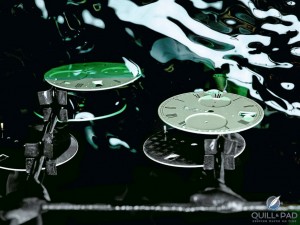Solar panel recycling
The mass production of solar panels began around 20 years ago. At that time, it was estimated that the lifespan would be around 25 years. In other words, in the near future, the amount of e-waste from obsolete solar panels will increase rapidly. By 2050, an estimated 6 million tons of "solar waste" will be generated annually. Processes to economically recycle scrapped solar panels have yet to be developed to recover silver, silicon and other valuable materials.
In a scientific article, engineers at Arizona State University in Tempe, USA, have addressed various issues, including reusability, extraction of components and materials, required technologies and economics. A gentle and clean process for separating silicon solar cells from the glass wafer needs to be developed. Silver and lead, which are present in low concentrations, need to be recovered for various reasons and chemical processes may be an option. Broken glass, aluminum frames and copper wires can be separated using mechanical processes. Collection and processing costs can also be significant. Recycle PV Solar and Veolia are among the first companies to recycle solar panels.
The commercialization of perovskite photovoltaics is limited by their complicated production. Scientists at Mahidol University in Thailand have developed a spraying process to create multi-layer designs. The spraying process takes place at around 100 oC. Very small droplets are applied to the surface of the bottom layer. The disadvantage of conventional liquid processes, in which the bottom layer is dissolved, is eliminated by this process.
Progr. Photovoltaic 2020, https://doi.org/10.1002/pip.3316; Opt. Mater. Expr. 2020, 10, pp. 1497 - 1508
Surface technology in port facilities
 Seawater and changeable weather conditions in the ocean place very high demands on the corrosion protection of ships. Varnishing, painting, powder coating, cathodic protection and the various electroplating processes are constantly required here. While many processes are carried out on site, the conditions for carrying out electrolytic coatings on ships are rather limited. Smaller parts and components that can be taken apart can be coated at an electroplating facility nearby. However, it is often required to electroplate typically with copper, silver, nickel and their alloys on site.
Seawater and changeable weather conditions in the ocean place very high demands on the corrosion protection of ships. Varnishing, painting, powder coating, cathodic protection and the various electroplating processes are constantly required here. While many processes are carried out on site, the conditions for carrying out electrolytic coatings on ships are rather limited. Smaller parts and components that can be taken apart can be coated at an electroplating facility nearby. However, it is often required to electroplate typically with copper, silver, nickel and their alloys on site.
Electroplating technology offers selective plating for this purpose. Selective electroplating has many advantages, such as speed, safety, low environmental impact, acceptable quality, flexibility, portability and low bath volumes. One of the leading suppliers of selective plating is SIFCO AFC with the SIFCO Process. The US, Japanese and UK navies are major customers of SIFCO.
https://www.marinelink.com/news/dock-selective-electroplating-480069
Zn-Mo Alloy Plating
Alloy plating with zinc is carried out industrially by electroplating, with Co, Ni or Fe as typical alloying metals. At the Polish Academy of Sciences in Kraków, scientists have investigated the plating of Zn-Mo alloys from aqueous citrate baths. Interestingly, it was found that the presence of a surfactant is essential for coating molybdenum. The surfactant PEG 20000 is adsorbed on the inner Helmholtz surface (IHP) of the cathode and prevents the reduction of zinc-citrate complexes. In the absence of PEG 20000, the Mo complexes are only reduced to Mo oxides during electrolysis. PEG 20000 promotes the formation of Zn(I)-Mo(IV)-citrate complexes and their reduction to Zn-Mo. The other surfactants investigated, such as CTAB, Triton X-100 and D-Sorbitol, were found to form Zn and Zn, Mo phases as well as Zn and MoO2 phases. Composite coatings can also be plated in the presence of PEG 20000.
J. Alloys Comp. 2020,827,https://doi.org/10.1016/j.jallcom.2020.154195
Glashütte dials
 An interesting historical report on the company Th. Mueller in Pforzheim and the manufacture of dials has recently been published.
An interesting historical report on the company Th. Mueller in Pforzheim and the manufacture of dials has recently been published.
Electroplating naturally plays an important role!
Address of the author
Dr. Nagaraj N. Rao, RRR House, RRR Labs Pvt. Ltd, Plot 80, Sector 23, Navi Mumbai - 400 705 India; Fax + 91 22 2783 4814
E-mail:


